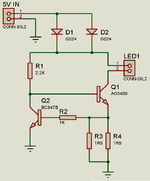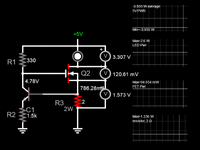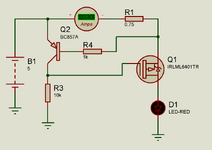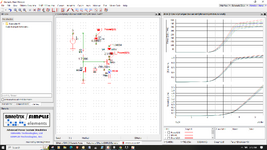gauravkothari23
Advanced Member level 2
Hi All.
I Am using a Constant current circuit (Attached) to drive the SMD LED's.
i am using Approx 750mA of Current to drive a LED's with 5V input which is working fine. Mosfet used is SMD SOT23 Package AO3400. My problem is the mosfet gets extremely hot around 70 to 75 degree Celsius within 10 to 12 seconds.
Can anybody please suggest me why the mosfet is getting hot and how can i avoid it. What changes are required to be done in my existing circuit.
I Am using a Constant current circuit (Attached) to drive the SMD LED's.
i am using Approx 750mA of Current to drive a LED's with 5V input which is working fine. Mosfet used is SMD SOT23 Package AO3400. My problem is the mosfet gets extremely hot around 70 to 75 degree Celsius within 10 to 12 seconds.
Can anybody please suggest me why the mosfet is getting hot and how can i avoid it. What changes are required to be done in my existing circuit.



